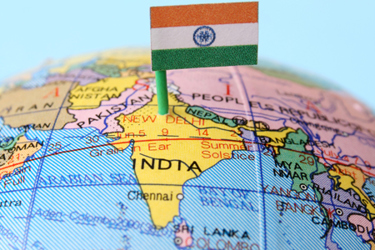India's CROs & CDMOs Come Of Age In The Global Marketplace
By Gunjan Bagla, Amritt Inc.

Most of the top 10 pharmaceutical companies and many large biotech companies today get a portion of their preclinical and clinical research done in India. Many of their peers collaborate with talent in India for new drug development and a large number utilize contract manufacturers in India for vaccines, proteins, large and small molecules, and more. India’s biotech ecosystem is becoming an important enabler for startups in their development journey from friends and family funding to angel, seed, and venture rounds and all the way to going public, selling to a PE fund, or being acquired by a large player in their own sector.
In my travels throughout India, I have visited contract providers in many regions, including Mumbai and Ahmedabad in the west, Delhi in the north, and both Bangalore and Hyderabad in the south of the country. There are close to 100 Indian entities offering services to global customers. According to N. Suresh, chief operating officer of ABLE, the Association of Biologically Led Enterprises, “India's CROs are considered as good as anyone else in the world in terms of infrastructure, research talent, operational processes, documentation, regulatory compliances, and quality control.”
Some of these are owned by foreign entities, a few have been acquired by private equity funds such as Texas Pacific Group and Advent International, and some are listed on India’s stock exchanges. I have visited one that received a significant investment from Goldman Sachs. Several are still family owned and waiting for the opportune time for an initial public offering. Large Indian pharmaceutical companies such as Dr. Reddy’s Labs and Aurobindo have acquired or built their own CROs/CDMOs.
While a low price is the initial attraction for many American and European companies looking at India’s life sciences ecosystem, there are many additional factors that can be more meaningful. The larger service providers in India have massive scale, so they may have experienced your situation more than once before. They are not experiencing the shortage of Ph.D.-level professionals that the U.S. is currently experiencing (indeed, India is graduating large numbers of Ph.D.s), they may have larger vivariums than your local lab, they have faster startup and scale-up times, and they have production capacities up to thousands of liters per day. Remember that two of the largest vaccine makers in the world by volume are Indian companies: Serum Institute of India and Biological E, Ltd.
“Cost is not a main criterion for Indian CROs now to compete. What Indian companies offer is a large pool of scientific talent who are being trained quickly within these CROs to work on a variety of research projects for a range of clients from around the world. India produces over 200,000 science graduates in a year and a large percentage of them could be deployed meaningfully for this kind of work. Middle management researchers with Ph.D.s and professional experience from abroad are also an asset,” Suresh says.
Let’s take a look at some of the areas of expertise becoming more common at Indian CROs and CDMOs.
Preclinical Research
Many Indian companies have large vivariums where GLP experiments can be performed on rodents including humanized mice, dogs, farm pigs, mini-pigs, and sheep, and some have arrangements for non-human primates (NHPs). Some of these facilities do their own analysis, while others also serve as a back room for others in the Indian ecosystem. The facilities are typically certified by the Association for Assessment and Accreditation of Laboratory Animal Care International.
Service providers in India can readily run product characterization studies and toxicology studies. Global customers are turning to these companies for formulation analysis and bioanalysis of candidate products.
Clinical Research
The Indian government created stringent rules to protect human subjects in clinical trials in 2013 and then revised the process in 2019 to promote global clinical trials while maintaining subject safety. According to Indian experts, the 2019 revisions were "aimed at promoting clinical research in the country by implementing time-bound review of applications, allowing increased predictability and transparency of regulatory pathway and providing clarity" to applicants. The clinical trials business has boomed in India since then.
Also, the country has 23 official languages. Depending on the location of the trial, material for the subjects may have to be presented in as many as four languages. For example, we ran a trial for a product to prevent hospital acquired infection, and human subjects could be speakers of Telugu, English, and Hindi/Urdu.
On a cost basis, pharmaceutical and biotech companies can run 10 trials in India for the price of seven in the U.S.
Overall, clinical research subjects are readily available and trials can often be completed more quickly than in Western countries.
Development
Multiple Indian suppliers offer integrated drug discovery and development services, where all IP rights can be assigned to the overseas client. A few suppliers also have their own discovery and development services and will firewall client work from their own. In a number of my experiences, I have seen American biopharma companies collocate their own development center inside a service provider, but the hundreds of scientists and engineers are working exclusively for the American company and there is zero flow of information or personnel across the firewall. Indian scientists have already played a crucial role in developing some blockbuster drugs.
Thousands of scientists and hundreds of Ph.D.s are on staff at the larger providers and they run discovery services across chemistry and biology. These organizations have developed small molecules and large molecules for their clients, including antibody-drug conjugates, vaccines, and oligonucleotides. They have worked in many disease systems, including oncology, pain and inflammation, autoimmunity, cardiovascular, and metabolic diseases. Suresh of ABLE adds that today, Indian companies are working on cell and gene therapies, T cells, and almost all cutting-edge focus areas.
Executives new to working with India sometimes have misgivings about sharing intellectual property or other proprietary information with vendor partners in India. In fact, there are very few instances of IP violations or trade secret leaks by Indian life sciences companies and none that I found relating to CROs/CDMOs/CMOs.
Part of the reason for this concern is the extensive coverage by Western media of compulsory licensing granted by the Indian government. “In reality,” Suresh says, “the government of India has issued only two compulsory licenses of cancer products after following due process mandated under the WTO rules for public health emergency conditions.” These actions were promoted by American activists and European nonprofits such as Doctors Without Borders. And certainly, there are no current instances of the Indian government willfully flouting IP practices, unlike at least one other large country.
Manufacturing
For decades, India has been the largest provider of generic medications to the United States and, in fact, to the world. Today, you can come to India to get your own formulation manufactured at one of hundreds of U.S. FDA registered facilities. In fact, the FDA has a team of in-country inspectors in India.
More relevant to our discussion here, however, is that Indian CDMOs can be your production partner for from a few grams per day up to thousands of liters a day in some of the most massive fermenters you can find anywhere. As you go from discovery to preclinical or clinical trial stage, many Indian partners graduate to meso scale and further to production pilots. Once you are in full commercial production, your CDMO may offer the capacity you need, or it may build a dedicated facility just for you. In some cases, you may find it better to transition to a pure CMO rather than a CDMO, and there are plenty of those in India as well.
Conclusion
Not every company is a good match for getting work done in India and once you decide to explore an Indian supplier, it is important to choose carefully, considering your own maturity and prior experience, the sophistication of the potential partner, and their current backlog and staffing situation. If you are a midsize company or a startup in early-stage development, your best matched partner may not be the same as the one for Genentech, as an example. It might also be wise to visit your partner from time to time or to hire a trusted advisor who can keep watching for pitfalls and new opportunities on your behalf. Also, venture dollars can also be used for more work in India versus in the U.S.
Ignoring India and allowing your competitors to get to market first is a competitive risk you and your investors cannot afford any more.
About The Author:
 Gunjan Bagla is CEO of Amritt, Inc., a California-based consulting firm that helps Western companies do business in India. Organizations that have benefited from Amritt's expertise include Becton Dickinson (BD), Biocom California, Combe, Clorox Healthcare, Johnson & Johnson, iHealth, and Roche. He writes about India for the Harvard Business Review and for Med Device Online. He holds a mechanical engineering degree from the Indian Institute of Technology Kanpur and an MBA with honors from Southern Illinois University, Edwardsville. Gunjan is a frequent speaker on subjects relating to India’s healthcare, biotech, and medical device ecosystem. You can reach him on LinkedIn.
Gunjan Bagla is CEO of Amritt, Inc., a California-based consulting firm that helps Western companies do business in India. Organizations that have benefited from Amritt's expertise include Becton Dickinson (BD), Biocom California, Combe, Clorox Healthcare, Johnson & Johnson, iHealth, and Roche. He writes about India for the Harvard Business Review and for Med Device Online. He holds a mechanical engineering degree from the Indian Institute of Technology Kanpur and an MBA with honors from Southern Illinois University, Edwardsville. Gunjan is a frequent speaker on subjects relating to India’s healthcare, biotech, and medical device ecosystem. You can reach him on LinkedIn.
